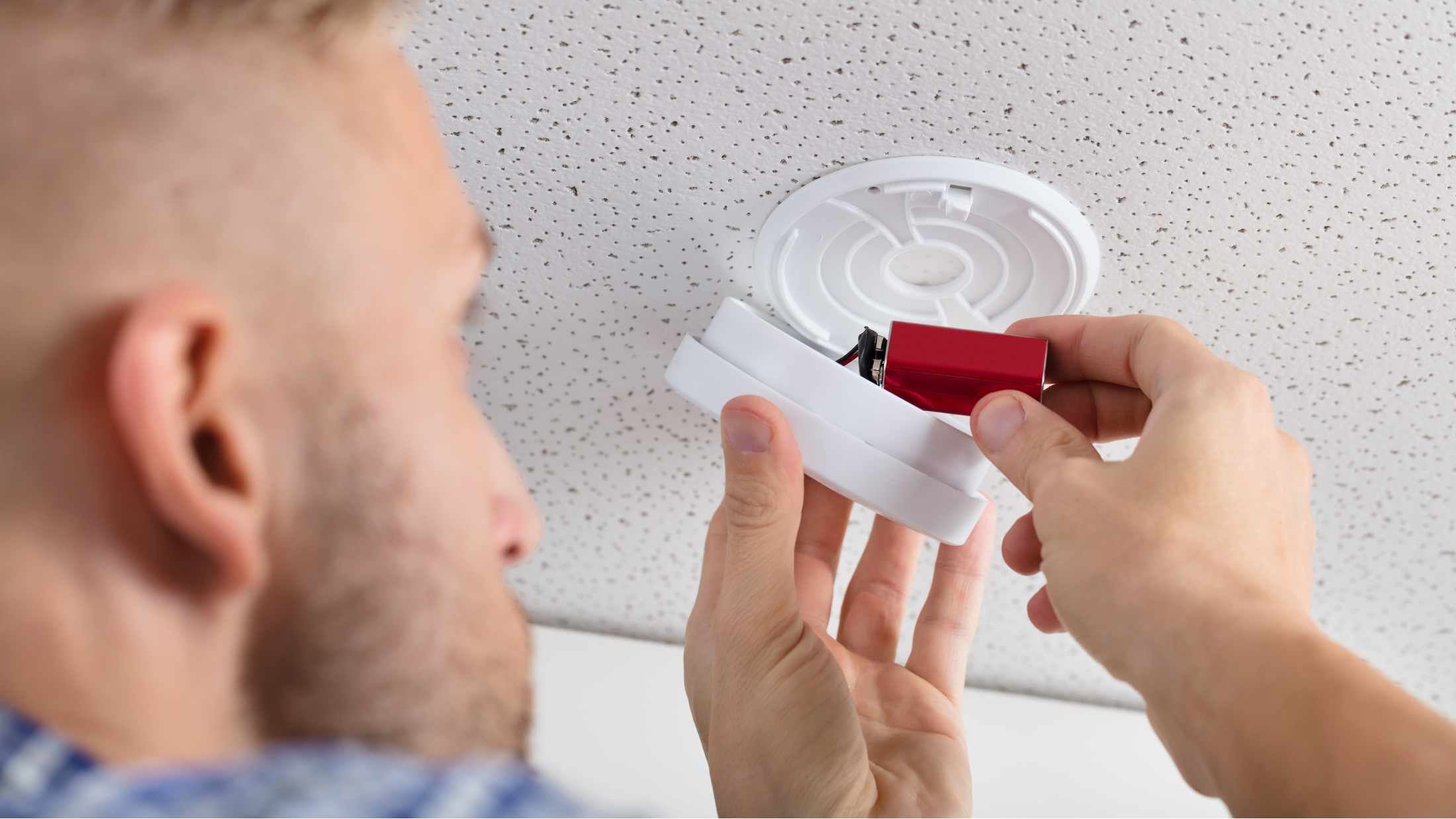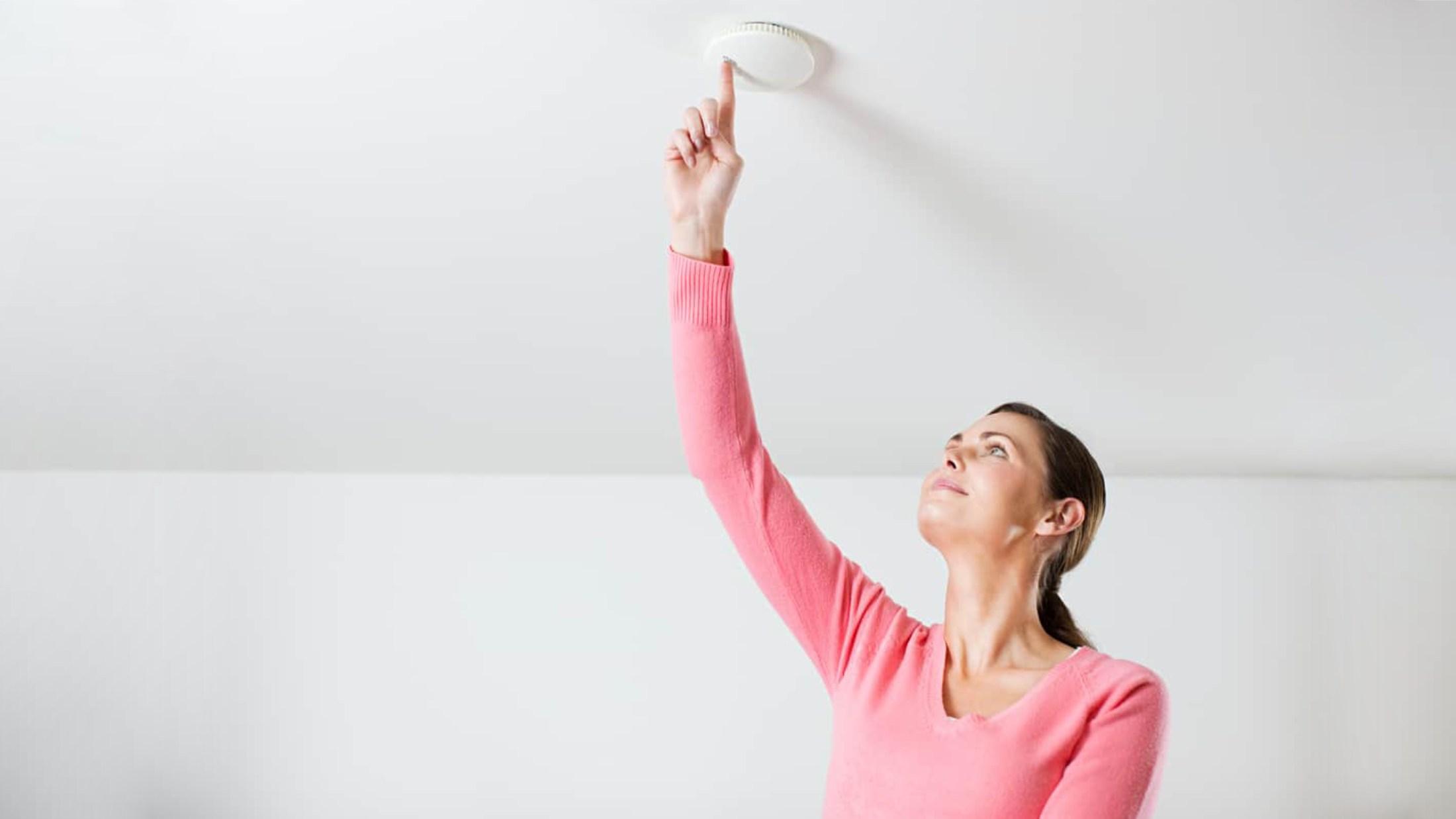From fireplaces and cookers, to bonfires and barbecues, fire risks are all around. With around 30,000 house fires a year in the UK, it’s important to take steps to protect yourself, your loved ones and your home.
Keeping your house safe with a fully functioning fire alarm is your first line of defence (remember to test your alarm regularly). In this guide, we’ll look at some of the common causes of household fires and how to prevent them:
- What are the most common causes of house fires?
- How to reduce your risk of a house fire
- Fire safety for thatched houses
- Fire safety checklist
What are the most common causes of house fires?
Keeping on top of potential fire hazards will help you protect your home from the worst. We’ve put together a list of the most common fire risks you’ll find around your house and how to keep them under control:
- Cooking equipment
- Overloaded plug sockets
- Electricals
- Cigarettes
- Candles
- Heating
- Electrical fires
- Fireplaces
- Barbecues
- Bonfires
How to reduce your risk of a house fire
Cooking equipment
Cooking up a storm in the kitchen? Whether you’re a gourmet connoisseur, or chucking a couple of jacket potatoes in the oven, cooking can be a fire risk.
They say “a watched pot never boils” - but it does prevent fires. Always keep an eye on the kitchen while you’re cooking. Fires in the kitchen can start from pots and pans overheating, and appliances being left unattended.
Consider keeping a fire blanket and extinguisher on hand. That way, you’ll be equipped if things get too hot in the kitchen.
Overloaded plug sockets
It’s all too easy to find yourself plugging more and more outlets into one plug socket. However, this is a real fire risk.
Reducing your risk is easy. Don’t overload your plug sockets where you can. Extension cables can be handy to have around, but filling all the sockets at once could cause overheating.
Think twice about how many devices you need powered at once, and unplug electricals you’re not using.
You’ll need to check your plug sockets regularly. to make sure everything looks normal. If you see anything out of the ordinary - like cracks, scorch marks, or loose wires - get a professional in to check it over and fix the problem.
Electricals
In the modern age, it feels like everything needs to be charged: phones, watches, games consoles. But, you’ve probably noticed your devices getting hot after prolonged use. If left unattended, this can pose a fire risk.
To minimise your risk of electrical fires:
- Only charge your electrical items when you’re at home, preferably in the same room.
- Make sure there’s adequate ventilation for your electricals as they charge.
- Use trusted, branded chargers and products from reputable suppliers.
- Always buy electrical goods from a trusted and reputable supplier. That’s the best way to be sure the products are up to the required safety standard, which will help protect you from potential fire risks.
Cigarettes
Open flames are one of the most obvious fire risks – and this includes cigarettes and candles. In fact, smoking accounts for almost a third of house fire related deaths.
If you smoke, make sure your smoking materials have been fully extinguished before throwing them away. An ashtray outside is your best bet. Keep lighters and matches away from children and pets, too.
Knocking the habit on the head is certainly the best option – if you can.
Candles
Like cooking equipment, never leave lit candles unattended. Keep naked flames away from curtains, bookshelves, and fabrics. Swapping real candles for LED ones can help reduce fire risk and help keep kids and pets safe – all while keeping that cozy candlelit aesthetic.
Heating equipment
Portable heaters and radiators are quick way to heat your home, but they also pose their own risks. Although it may be tempting, you shouldn’t use these heaters to dry clothes, this is a major fire risk.
Inspect your appliances regularly so you’re sure they’re working correctly. This includes bleeding your radiators. Not sure how to do it? We’ve got a step-by-step guide.
Electrical fires
Electric fires are a great option if you don’t have space for a traditional fireplace. But it’s important to keep on top of their safety.
Faults and bad wiring are a common cause of problems with electric fires. Get a professional to check your wiring out from time to time.
If you notice something’s wrong, make sure you get a professional in to fix it – it’s best to leave the DIY alone when it comes to electrics!
Fireplaces
A classic fireplace is an eye-catching feature in any home. But it’s yet another open flame.
When it comes to fireplaces, make sure you have a proper fire guard to stop any potential risks. Don’t leave a lit fireplace unattended and get a pro to check your fireplace and chimney from time to time. Carbon monoxide alarms will help alert you to any problems, too.
Barbecues
Good burgers. Good weather. Good company. Nothing quite says summer like a barbecue. But whether you’re using a disposable barbecue or a gas-fuelled one, you’ll want to make sure everything is safe and secure.
Never use a barbecue inside. They’re not designed for indoor, and could create harmful fumes, as well as posing a huge fire risk.
Keep your barbeque away from flammable objects – that includes fences and sheds. Keep an eye on it at all times. You’ll need to clean the barbecue after every use, too. A build up of grease and fat could add to your fire risk.
Got a gas-fuelled barbecue? Check regularly for gas leaks. When you’re done grilling, you’ll need to store your gas cylinder away from heat sources and open flames.
Bonfires
Thinking of starting up a bonfire in the back garden? Burning autumn leaves? Throwing a Guy Fawkes on for good measure?
Before you get burning, here’s a few tips to consider:
- Choose a site away from wooden fences, sheds, and spaces where children may be playing.
- One person should be responsible for the bonfire at all times.
- Children should be supervised.
- Never use paraffin or petrol on a bonfire.
- Avoid loose clothing and tie back long hair.
- Keep a bucket of water handy in case of an accident.
- After the party, pour water on the fire, rather than leaving it to burn out.
Fire safety for thatched houses
If you live in a thatched property, there’s some extra steps you may need to take. Considering the additional fire risk that comes with thatched buildings, you’ll need to look into to specialist insurance to protect your home.
Most insurers will ask for a copy of a valid electrical inspection report. You’ll also need to ensure your chimney and roof are inspected regularly by professionals.
Fire safety checklist
Keeping your home safe and secure isn’t all that difficult. This fire safety checklist will help you make sure you’ve got everything in place to avoid a fire, and to help you if the worst should happen.
- Be prepared
Have an escape plan prepared in case a fire happens. Know where your accessible doors and fire extinguishers are. - Smoke alarms
You should have enough smoke alarms fitted around your home. Check them regularly so you know they're working. - Take care
When cooking, using candles or around an open flame, make sure you're careful and keep an eye on it. - Smoke outside
If you're a smoker, make sure you do it outside. Keep ashtrays and lighters in a safe place. - Prevention
Keep flammable and combustible liquids secure and away from any fire hazards. - 999
If the worst happens, don’t tackle the fire yourself. Call 999 and get emergency help to battle the blaze.
When it comes to protecting your home, we’re here to help. Why not take a look at our different levels of home insurance cover? Or, get a quote for AXA home insurance now.












